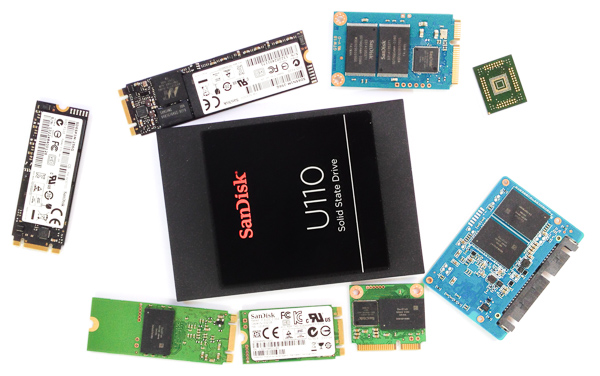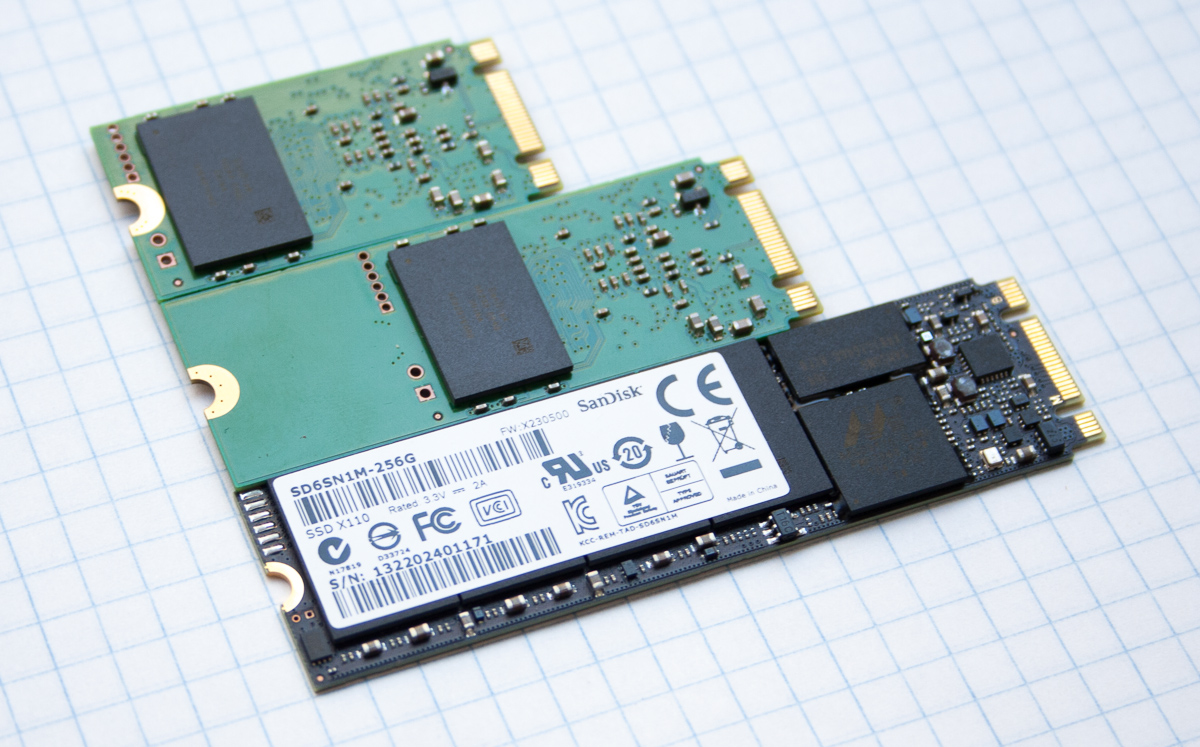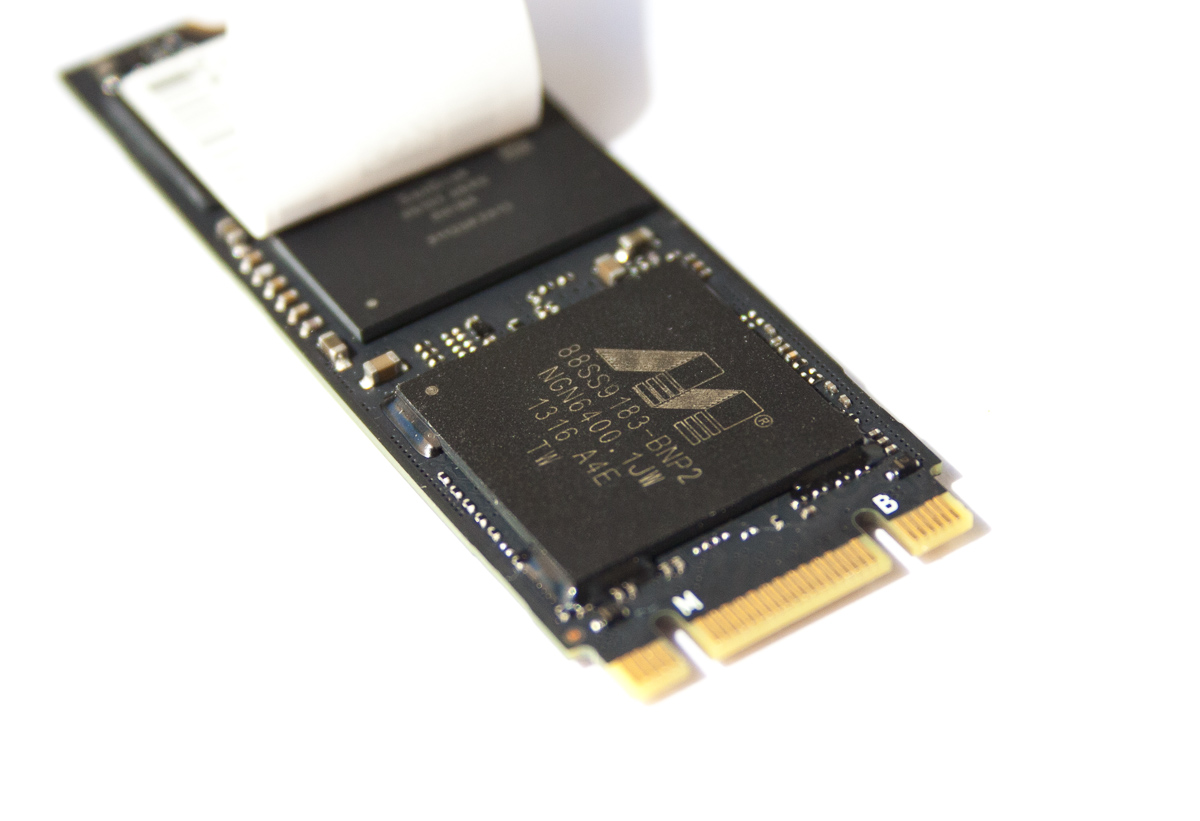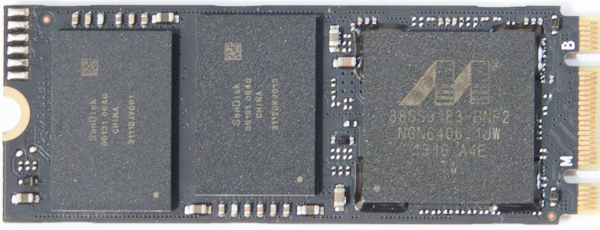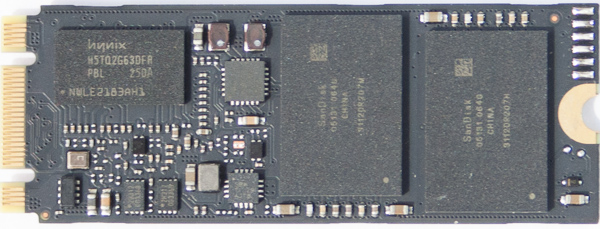SanDisk A110 PCIe SSD: Armed With The New M.2 Edge Connector
We got our hands on an early sample of SanDisk's A110 SSD. So what? Big deal? Not a chance. This thing is PCI Express-attached and sports the new M.2 edge connector. Read on to learn more about the next generation of solid-state storage connectivity.
SanDisk A110 256 GB: Introducing The M.2 SSD Form Factor
You find NAND flash in so many form factors nowadays. The familiar 1.8-, 2.5-, and 3.5-inch drives are hold-overs from the days of mechanical storage, when moving parts and standardized enclosures made it difficult to drop a custom solution into any environment. That's not nearly as problematic with solid-state technology, of course. With so many PCs still lacking an SSD, it only makes sense to continue improving their form factors, infusing flexibility and higher performance.
Fortunately, this gets easier as the density of flash increases. It used to be that more dies crammed into more memory packages were necessary to enable the highest-capacity SSDs. And that meant eating up more PCB space. Today, there are some truly compact options available. Don't believe me? Check out the box of OEM offerings that SanDisk sent us. Some are used in gambling machines, others handle I/O for digital signage, and the more familiar ones end up in the computing devices we're all used to working on.
Today, though, there's something very specific we want to look at: the M.2-based drives. Specifically, we got our hands on the 256 GB SanDisk A110 M.2 PCIe.
From mSATA To M.2
When we get right down to it, the mini-PCIe form factor that mSATA-based SSDs resemble was mostly used for enabling Wi-Fi connectivity in notebooks. Yes, Intel made a Turbo Cache module for Windows Vista-equipped laptops armed with a few gigabytes of NAND for the operating system's ReadyBoost feature, but that was all the upgradeable slot was used for at first. Eventually, mSATA caught on for SSDs in notebooks as per-gigabyte pricing fell and density increased. But the dimensions were all wrong for efficiently placing the components that go into an SSD.
As laptops got thinner and lighter, storage had to make a transition as well. Although mSATA served admirably for years, it's clear that something different is needed moving forward, especially in Ultrabooks, which are governed by Intel's requirements for performance and power consumption. This is where M.2 comes in.
M.2 is a new interface and collection of form factors built around a 20 mm-wide edge connector. The three M.2-based drives from SanDisk in the shot above represent the 2242, 2260, and 2280 versions. Each PCB is 22 mm wide (a little wider than the connector itself) and varies in length: 42, 60, and 80 mm.
What each vendor chooses to do with available space on the circuit board is largely based on application requirements. Conceivably, you could shove lots of flash on each side and create a high-capacity drive. But it's more likely that the longer variations will simply be used to create single-sided devices with a lower profile (which is what the black 80 mm SanDisk X110 above does). A double-sided M.2-based SSD is only 3.5 mm or so thick, while a single-sided drive measures less than 2 mm. So clearly, every little bit of space matters in the coming generation of mobile devices.
Get Tom's Hardware's best news and in-depth reviews, straight to your inbox.
At least at first, most M.2-based SSDs will be quite similar to mSATA drives. They'll employ SATA-capable controllers with performance that looks the same as a result. And if you had a platform equipped with SATA, mSATA, and M.2, there are several vendors that could sell you an almost-identical SSD for each interface (like Crucial with its M500).
If you really want to exceed the limits of SATA, you need an M.2-based SSD with a native PCI Express controller on-board. That's what SanDisk is showing off in the A110 we're benchmarking today.
SanDisk A110 M.2: Attached Via Two PCIe 2.0 Lanes
As suggested, the A110 M.2 doesn't employ a SATA flash controller. Instead, it rocks Marvell's 88SS9183, a native PCIe 2.0 processor communicating across two lanes, a theoretical 1 GB/s in each direction. Drop SanDisk's A110 in and it shows up as an AHCI device, with no special drivers needed. That's a bit different from the PCIe-based SSDs you've seen reviewed in the past, which did require proprietary drivers. In contrast, SATA devices are able to use AHCI, and Windows has those drivers built-in (storahci.sys in Win 8 and msahci.sys in prior versions).
One day, NVM Express will standardize solid-state storage over PCIe, and that's good news if for no other reason than AHCI wasn't designed with SSDs in mind. The A110 doesn't interface via NVMe, though. It shares AHCI support with all of the SATA-based drives out there. And that's fine; AHCI remains viable so long as NVMe is still over the horizon.
A Trip Around SanDisk's A110
In addition to its Marvell controller, this A110 plays host to 256 GB of SanDisk's eX2 ABL Toggle-mode NAND built on a 19 nm process. Given two packages per side, totaling four, we can surmise that each houses eight 64 Gb dies. Add Marvell's 9183 controller and 256 MB of Hynix DDR3, and you have a SSD. It's fair to say that the A110 is a lot like the Extreme II we reviewed in SanDisk Extreme II SSD Review: Striking At The Heavy-Hitters, right down to SanDisk's non-volatile emulated SLC cache technology, nCache.
Current page: SanDisk A110 256 GB: Introducing The M.2 SSD Form Factor
Next Page More On M.2 And SanDisk's Fancy PCIe Adapter Card-
Mike Friesen Awesome new stuff. Can't wait to see if this drive actually uses the full potential of the M2, and if Samsung or OCZ can one-up them.Reply -
cryan Reply11487924 said:Awesome new stuff. Can't wait to see if this drive actually uses the full potential of the M2, and if Samsung or OCZ can one-up them.
Samsung actually has some pretty awesome M.2 PCIe action going on. We're trying to get our hands on everything, so stay tuned.
Regards,
Christopher Ryan
-
It will be nice to see vendors implement the NVMe connectors in the desktop mobo's, which in turn will redefine case design, as less storage space will be required for storage. I am aware that the initial intent is to direct these at the mobile market, but desktops can benefit as well.Reply
-
cryan Reply11488018 said:It will be nice to see vendors implement the NVMe connectors in the desktop mobo's, which in turn will redefine case design, as less storage space will be required for storage. I am aware that the initial intent is to direct these at the mobile market, but desktops can benefit as well.
You'll really see NVMe take off on the desktop with the move towards SATA Express. A SSD on SATA Express will leverage NVMe and two PCIe Gen 3 lanes. Though some motherboards will (and already do) have M.2 connectors, M.2 really makes more sense in mobile applications. M.2 will only get traction on the desktop insofar as it will begin to replace mSATA. Tons of mainboards, especially smaller form factor products embrace mSATA, and moving to M.2 is a natural transition. However, M.2 drives are hard to find right now, and we really won't see a plethora of options until next year.
Regards,
Christopher Ryan
-
nekromobo I got M.2 toshiba ssd in my Sony Vaio Pro 13.. review that?Reply
and it should have samsung M.2 in some countries.. -
CaedenV I may no longer have motivation to upgrade my system based on CPU specs, but with DDR4, M.2, new restive storage based SSDs, and better chipset features I will still have enough reason to upgrade in a year or two.Reply -
jimmysmitty Reply11488122 said:11488018 said:It will be nice to see vendors implement the NVMe connectors in the desktop mobo's, which in turn will redefine case design, as less storage space will be required for storage. I am aware that the initial intent is to direct these at the mobile market, but desktops can benefit as well.
You'll really see NVMe take off on the desktop with the move towards SATA Express. A SSD on SATA Express will leverage NVMe and two PCIe Gen 3 lanes. Though some motherboards will (and already do) have M.2 connectors, M.2 really makes more sense in mobile applications. M.2 will only get traction on the desktop insofar as it will begin to replace mSATA. Tons of mainboards, especially smaller form factor products embrace mSATA, and moving to M.2 is a natural transition. However, M.2 drives are hard to find right now, and we really won't see a plethora of options until next year.
Regards,
Christopher Ryan
That's what I was thinking. SATA Express is going to be fast enough for now as I have used PCIe SSDs before (OCZ Revo based drive) and compared to my 520 its hard to notice a difference, especially since there are other bottlenecks stopping it from being able to utilize that bandwidth.
This will be great for ultra portable systems though and ITX systems.
-
cryan Reply11488367 said:I got M.2 toshiba ssd in my Sony Vaio Pro 13.. review that?
and it should have samsung M.2 in some countries..
Absolutely... just send it my way and consider it done.
Regards,
Christopher Ryan
-
mikeangs2004 will there be RAID or SLI/CFX for PCIe based SSD's?Reply
I don't think so b/c it's already way above 6G limit.
